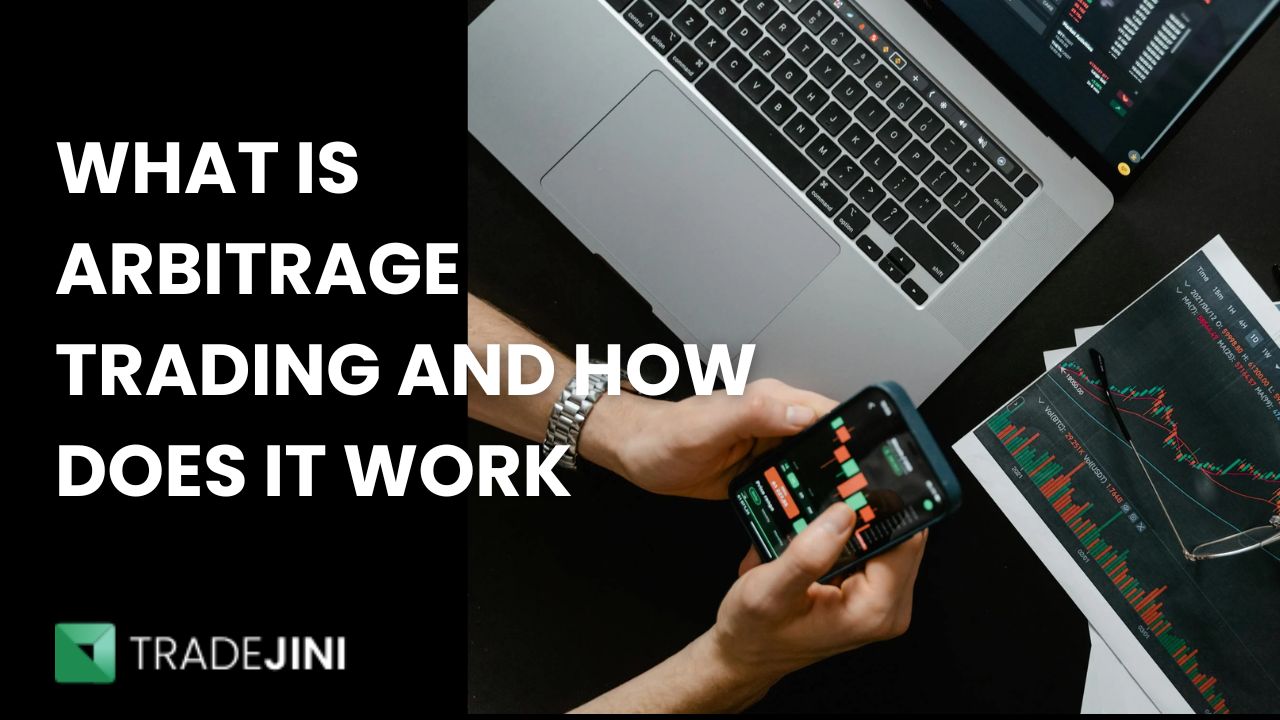Many people assume that the concept of arbitrage trading is difficult to grasp, especially if you are new to the ever-evolving world of financial investments and trading. But what one needs to remember is that it is one of the simplest strategies to make a profit from the price disparity in the market and is easy to understand if accompanied by some great examples.
This blog will provide an in-depth exploration of what arbitrage trading is, its meaning, and how it works to generate potential profits for investors and traders.
What is Arbitrage Trading?
Before we get into the definition of this concept, let us understand it with the help of a simple example:
Imagine you are shopping for a mobile phone online and find the same model priced differently on two e-commerce platforms. On Platform A, the mobile phone is listed for ₹10,000, while on Platform B, it is priced at ₹9,800. You notice this price difference and decide to engage in a simple form of arbitrage trading.
You purchase the mobile phone for ₹9,800 from Platform B and simultaneously list it for sale on Platform A for ₹10,000. By doing so, you lock in a profit of ₹200 (₹10,000 - ₹9,800) without taking on any significant risk. This straightforward example illustrates the basic concept of arbitrage trading – buying an asset at a lower price in one market and selling it at a higher price in another market to capture the price differential as profit.
Definition of Arbitrage Trading:
Arbitrage trading refers to the practice of simultaneously buying and selling assets in different markets to take advantage of price differences. The goal of arbitrageurs is to exploit temporary discrepancies in prices to make risk-free profits. By capitalizing on these pricing inefficiencies, arbitrage trading helps to bring markets into equilibrium and ensure efficient pricing mechanisms.
Understanding the Meaning of Arbitrage Trading
What arbitrage trading entails is pretty simple. It is identifying opportunities to make a profit by taking advantage of the same asset priced differently across various markets and exchanges.
This price difference allows arbitrageurs to buy the asset at a lower price in one market and sell it at a higher price in another market, capturing the profit margin in the process. The main idea is to buy low, sell high and make gains in your investment without mitigating any market risk.
Also Learn: How to Trade in Options with Low Capital
How Does Arbitrage Trading Work?
Identifying Price Discrepancies
The strategy works in a simple way. Arbitrageurs monitor multiple markets or exchanges to identify instances where the same asset is trading at different prices. This disparity and differential take place due to multiple reasons - supply-demand imbalances, market inefficiencies or delayed, less-informed information dissemination.
Executing Trades
It is important to identify the market inefficiencies and be nimble on your feet to make the most of this disparity. Once a price difference is identified, arbitrageurs swiftly execute buy and sell orders to capitalize on the opportunity. By simultaneously buying the asset at the lower price and selling it at the higher price, arbitrageurs lock in profits with minimal risk exposure.
Market Efficiency
The process of arbitrage trading helps to improve market efficiency by narrowing price differentials and ensuring that assets are correctly valued across different platforms. As arbitrageurs exploit pricing inefficiencies, market forces work to align prices and reduce opportunities for risk-free profits.
Learn About: 20 Common Trading Mistakes and How to Avoid Them
Types of Arbitrage Strategies
Arbitrage trading can take various forms that involve exploiting time, different markets and models. Here are three types of arbitrage strategies discussing the same:
Spatial Arbitrage
Spatial arbitrage involves exploiting price differences between geographically separate markets.
Temporal Arbitrage
Temporal arbitrage involves profiting from price variations over time, such as differences in asset prices between different trading sessions.
Statistical Arbitrage
Statistical arbitrage utilizes quantitative models to identify mispriced assets and execute trades based on statistical analysis.
Benefits of Arbitrage Trading
Risk-Free Profits: One of the reasons people go for arbitrage trading is the fact that it gets you profits without dipping your legs into risky waters.
By exploiting price differentials, arbitrageurs can generate gains without being exposed to market fluctuations.
Market Efficiency: Arbitrage trading contributes to market efficiency by facilitating the rapid adjustment of prices to reflect true asset values. This process helps to eliminate pricing inefficiencies and enhance overall market stability.
Liquidity Provision: Arbitrageurs play a crucial role in providing liquidity to the market by engaging in buying and selling activities. This liquidity provision supports smoother market operations and reduces transaction costs for other market participants.
Challenges of Arbitrage Trading
Execution Speed: One of the key takeaways of successful arbitrage trading is to take quick decisions and rapid execution of trades to capitalize on price differentials before they disappear. So understanding the market and taking well-informed decisions to make the most of the differential is crucial in making the profit.
Costs and Fees: The profit margin in arbitrage trading is not that high, which makes it difficult to break even as factors like transaction costs, brokerage fees, and other expenses can erode profits, making it essential for arbitrageurs to carefully manage costs.
Regulatory Considerations: Arbitrage trading activities are subject to regulatory oversight, and arbitrageurs must comply with market rules and regulations to avoid potential legal issues.
Conclusion
Understanding the principles of arbitrage trading and its mechanisms can empower investors to make informed decisions and explore the potential benefits of this strategy in the financial markets. Learn detailed insights about trading on TradeJini.
Also Read: What is EMA in Trading? How to Use Exponential Moving Average With Formula



